Are you struggling to find an engaging and accessible game to pass the time? Do you feel overwhelmed by the complexity of modern video games? Are you looking for a solo gaming experience that stimulates your mind without requiring extensive equipment or multiplayer interactions?
In today’s fast-paced digital world, finding a game that strikes the perfect balance between simplicity and entertainment can be challenging. Many popular games often require intricate setups, complex controls, or intense multiplayer engagements, leaving little room for relaxation and personal enjoyment.
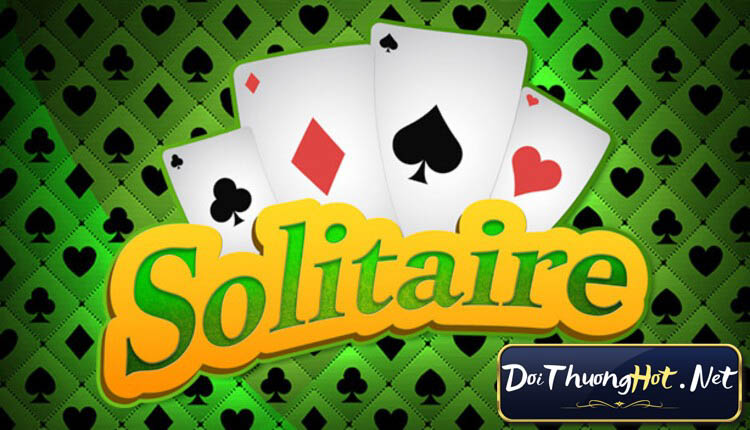
Enter Solitaire, the timeless card game that has captivated players for generations. With its easy-to-learn rules, solitary gameplay, and versatile variations, Solitaire offers the perfect solution for those seeking a casual yet engaging gaming experience. Whether you’re a seasoned player or new to the game, Solitaire provides hours of entertainment, sharpening your problem-solving skills and providing a moment of tranquility in a hectic world.
In this assessment, we’ll explore the rules, strategies, and benefits of various Solitaire variations, from Klondike to Spider, FreeCell to Pyramid. Discover the joy of playing Solitaire and unlock the secrets to mastering this classic game. Get ready to delve into the world of Solitaire and unlock the endless possibilities it holds.
I. Introduction
A. Definition and overview of Solitaire
What is Solitaire ?
Solitaire is a popular card game played by a single player. The objective is to arrange cards in specific sequences and suits, often starting with a shuffled deck. It offers a solo gaming experience, providing entertainment, mental stimulation, and relaxation.
B. Historical background of Solitaire
Solitaire, also known as Klondike Solitaire, has a fascinating historical background that adds to its enduring appeal. The origins of Solitaire can be traced back to the 18th century, where it is believed to have originated in Northern Europe.
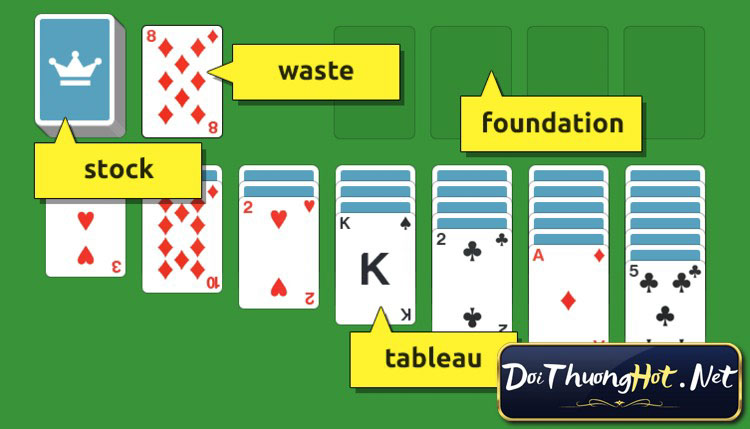
The earliest known documentation of the game dates back to 1783, described in a German book titled “Das neue Königliche L’Hombre-Spiel.” However, it wasn’t until the mid-19th century that Solitaire gained widespread popularity.
During this time, the game was introduced to the United States and became a favorite pastime among the American population. Solitaire’s simplicity, portability, and the ability to be played by a single player contributed to its rise in popularity.
In the digital era, Solitaire transitioned from physical decks of cards to online computer versions and mobile applications, making it even more accessible to a global audience.
Today, Solitaire remains a beloved classic card game, available on various platforms and enjoyed by millions worldwide. Its historical background and timeless gameplay have made it an integral part of gaming culture, capturing the hearts of both casual players and card game enthusiasts alike.
Read more: The Science Behind Rummy: How Cognitive Skills Impact Your Gameplay
C. Popularity of Solitaire as a card game
Solitaire has gained immense popularity as a card game, captivating players across generations. Its universal appeal can be attributed to several factors. Firstly, Solitaire is a game that can be played by a single player, making it an ideal choice for individuals seeking entertainment and relaxation on their own.

Its simplicity is another key factor, as the game’s rules are easy to understand, allowing players to quickly grasp the mechanics and start playing. Additionally, Solitaire offers a challenging and strategic gameplay experience. Players must carefully consider their moves, plan ahead, and make strategic decisions to successfully complete the game.
This element of strategy adds depth and engagement to the gameplay, keeping players hooked and encouraging them to improve their skills. Furthermore, Solitaire is a versatile game that can be played anytime and anywhere. Whether it’s during a break at work, while traveling, or in the comfort of one’s home, Solitaire provides a convenient and enjoyable source of entertainment.
The digital age has further amplified the popularity of Solitaire, with online versions and mobile apps making it easily accessible to a wider audience. With its timeless appeal and ability to provide both relaxation and mental stimulation, it’s no wonder that Solitaire continues to be a beloved and widely played card game.
II. Types and Variations of Solitaire
A. Klondike Solitaire
1. Rules and gameplay of Klondike Solitaire
Klondike Solitaire, also known as Solitaire or Patience, is a classic card game with straightforward rules and engaging gameplay. Understanding the rules is essential to enjoy and succeed in this popular game. Here’s a breakdown of the rules and gameplay of Klondike Solitaire:
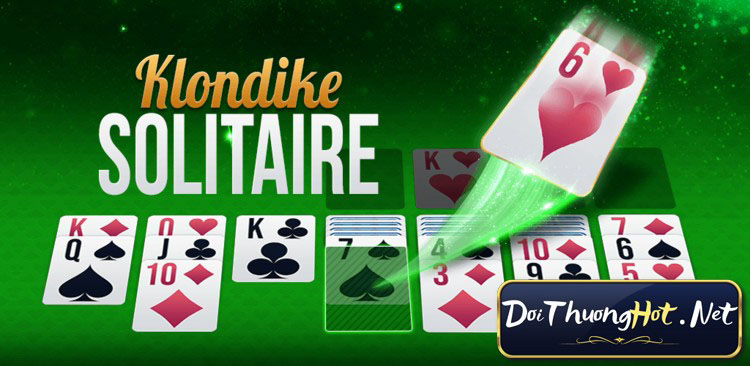
- Objective: The goal is to build four foundation piles in ascending order, starting with the Ace and ending with the King, for each suit (hearts, diamonds, clubs, and spades).
- Setup: A standard deck of 52 cards is used. The cards are shuffled, and seven piles, known as tableau piles, are created. The first pile has one card, the second has two cards, and so on, with the seventh pile having seven cards. The top card of each pile is face-up, and the rest are face-down.
- Gameplay: Cards can be moved to the foundation piles or between tableau piles according to specific rules. For example:
- Cards in the tableau piles must be arranged in descending order and with alternating colors.
- A King or a sequence starting with a King can be moved to an empty tableau pile.
- Only the top card of a tableau pile is available for play.
- Winning: The game is won when all cards are moved to the foundation piles following the ascending order and their respective suits.
Klondike Solitaire offers a challenging and strategic experience, requiring players to plan their moves carefully and utilize their problem-solving skills. Its simplicity and addictive gameplay have made it a timeless favorite among card game enthusiasts worldwide.
>>> Read more: Breaking Down the Rules: A Step-by-Step Guide to Playing Blackjack
2. Strategies and tips for winning Klondike Solitaire
Winning Klondike Solitaire requires a combination of strategy, planning, and careful decision-making. By implementing effective strategies and following these tips, players can increase their chances of success in the game:
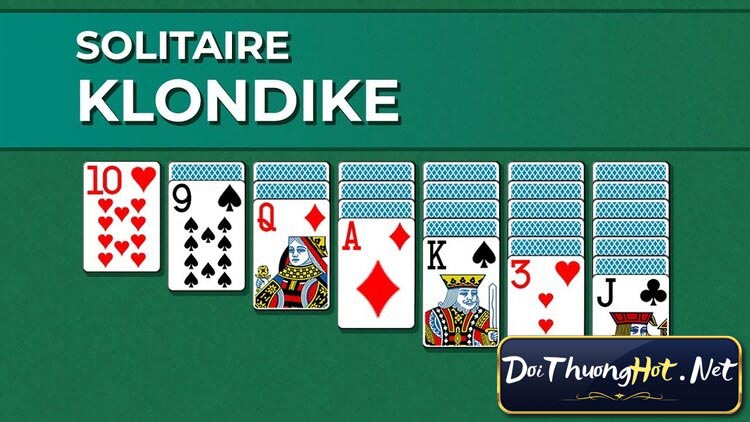
- Plan Ahead: Before making any moves, take a moment to assess the tableau and foundation piles. Plan your moves strategically by considering potential card sequences and creating empty tableau piles for more flexibility.
- Focus on Uncovering Cards: Prioritize moves that reveal face-down cards. Uncovering hidden cards gives you more options and opportunities to make strategic moves.
- Build Foundation Piles: Whenever possible, start building foundation piles early in the game. Focus on moving Aces to the foundation piles and subsequently build upon them in ascending order and suit.
- Empty Tableau Piles: Creating empty tableau piles is advantageous as it provides space to temporarily store cards and facilitates the movement of larger sequences. Aim to create empty tableau piles early on by moving Kings or sequences that can be moved to an empty spot.
- Don’t Block Essential Cards: Avoid stacking cards of the same suit on top of each other, especially in the tableau piles. This can make it difficult to access lower-ranking cards needed to build foundation piles.
- Undo Moves Sparingly: While the option to undo moves can be tempting, use it sparingly to maintain the challenge and strategic element of the game. Over-reliance on undoing moves may hinder skill development and the satisfaction of winning.
By incorporating these strategies and tips, players can enhance their gameplay in Klondike Solitaire and increase their chances of achieving victory. Remember, patience and thoughtful decision-making are key to mastering this classic card game.
B. Spider Solitaire
1. Rules and gameplay of Spider Solitaire
Spider Solitaire is a captivating card game that tests players’ strategic thinking and patience. Understanding the rules and gameplay is essential to enjoy this popular variation. Here’s a breakdown of the rules and gameplay of Spider Solitaire:
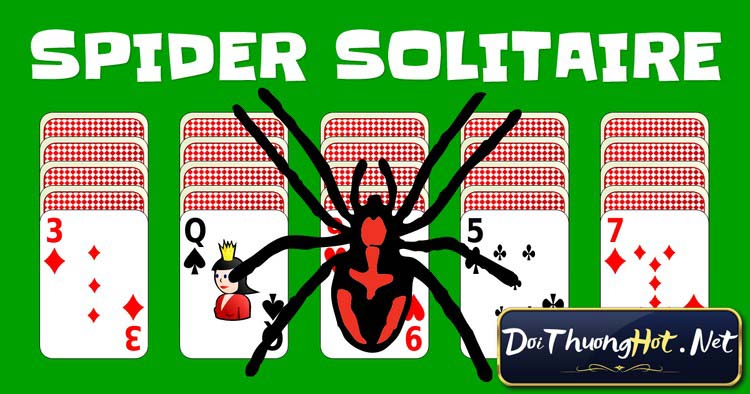
- Objective: The goal is to arrange all the cards in descending order from King to Ace within the tableau piles.
- Setup: Spider Solitaire is typically played with two decks of cards, resulting in a total of 104 cards. Ten tableau piles are created, each initially containing a different number of cards, with the first four piles having six cards each and the remaining six piles having five cards each. The rest of the cards are placed face-down in the stock pile.
- Gameplay: Cards can be moved between tableau piles according to specific rules. For example:
- A card can be moved to a tableau pile if it is one rank lower and of the opposite color.
- Sequences of cards can be moved as a unit if they are of the same suit and in descending order.
- Winning: The game is won when all cards are successfully arranged in descending order within the tableau piles.
Spider Solitaire requires careful planning, as moving cards from one pile to another can uncover hidden cards and create opportunities for more moves. The game offers various levels of difficulty, including one-suit and two-suit versions, adding to its replayability and challenge. By mastering the rules and employing effective strategies, players can enhance their experience and increase their chances of victory in Spider Solitaire.
2. Differences between one-suit and two-suit Spider Solitaire
Spider Solitaire offers different variations to cater to players of varying skill levels and preferences. One of the key distinctions is between one-suit and two-suit Spider Solitaire. Here’s an analysis of the differences between these two versions:
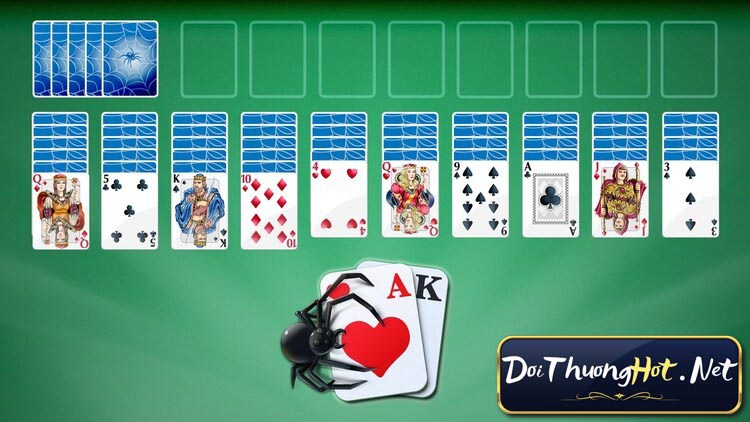
One-Suit Spider Solitaire:
- Setup: In one-suit Spider Solitaire, only one suit (hearts, diamonds, clubs, or spades) is used, resulting in a total of 52 cards.
- Difficulty: One-suit Spider Solitaire is considered the easier version, making it suitable for beginners or players who prefer a more relaxed gameplay experience.
- Strategy: With fewer suits to manage, players have a narrower range of card combinations to consider. This simplifies the decision-making process and allows for more straightforward strategies.
- Winning: The game is won when all cards are arranged in descending order within the tableau piles for a single suit.
Two-Suit Spider Solitaire:
- Setup: Two-suit Spider Solitaire uses two suits (hearts and spades or diamonds and clubs) from a standard deck, resulting in a total of 104 cards.
- Difficulty: Two-suit Spider Solitaire provides a moderate level of challenge, appealing to players seeking a balance between complexity and playability.
- Strategy: Managing two suits requires more careful planning and consideration. Players must think ahead and strategize their moves to optimize the arrangement of cards.
- Winning: The game is won when all cards are successfully arranged in descending order within the tableau piles for both suits.
The choice between one-suit and two-suit Spider Solitaire depends on the player’s skill level and desired level of challenge. One-suit is recommended for beginners or those seeking a more relaxed experience, while two-suit offers a slightly more complex and strategic gameplay option. Ultimately, both versions provide hours of engaging gameplay and the opportunity to hone one’s card-playing skills.
3. Tips for playing and winning Spider Solitaire
Playing and winning Spider Solitaire requires a combination of skill, strategy, and patience. Whether you’re a beginner or a seasoned player, these tips can help improve your gameplay and increase your chances of winning:
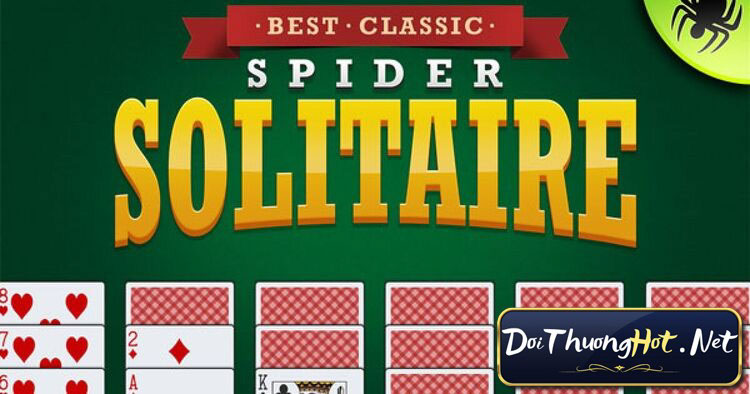
- Plan your moves: Before making any moves, carefully analyze the tableau and plan your strategy. Look for opportunities to create sequences and uncover hidden cards.
- Focus on emptying tableau piles: Emptying tableau piles should be a priority. Creating empty piles allows you to move sequences more freely and provides space to organize the cards.
- Build on higher-ranking cards first: Whenever possible, focus on building on higher-ranking cards. This helps create more space in the tableau and prevents blocking lower-ranking cards.
- Keep suits balanced: Avoid creating imbalanced suits by keeping an equal number of cards in each suit. Balancing suits increases your flexibility and options for making moves.
- Expose hidden cards strategically: When uncovering hidden cards, consider which suits or sequences are most beneficial to your overall strategy. Be mindful of potential gaps or blockages that may occur.
- Use the undo feature sparingly: The undo feature can be tempting to use, but relying on it too much can hinder skill development. Use it sparingly to maintain the challenge and satisfaction of the game.
- Don’t rush to use the stock pile: Before drawing cards from the stock pile, exhaust all possible moves within the tableau. This ensures you make the most of the existing cards before introducing new ones.
By applying these tips, you can enhance your Spider Solitaire gameplay, improve your decision-making, and increase your chances of achieving victory. Remember, practice and perseverance are key to mastering this challenging and rewarding card game.
C. FreeCell Solitaire
1. Overview of FreeCell Solitaire
FreeCell Solitaire is a popular variation of the classic Solitaire card game that offers a unique and engaging gameplay experience. Here’s an overview of FreeCell Solitaire:
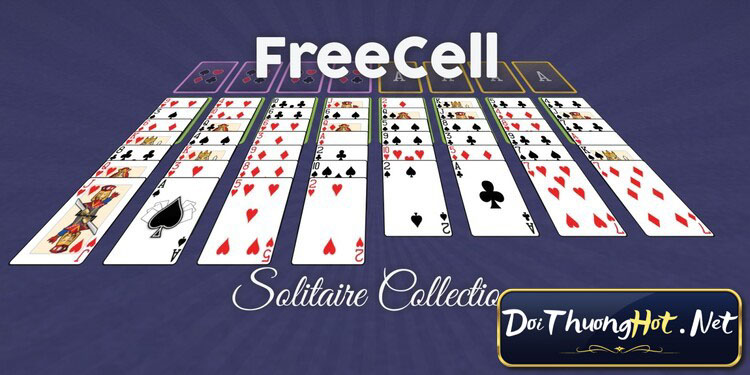
- Objective: The goal is to move all the cards to the foundation piles in ascending order and separated by suit (hearts, diamonds, clubs, and spades).
- Setup: FreeCell Solitaire is played with a standard deck of 52 cards. Eight tableau piles are created, with four foundation piles and four free cells. Each tableau pile starts with a single face-up card, while the remaining cards are dealt face-up to the eight columns.
- Gameplay: Cards can be moved between tableau piles, foundation piles, and free cells according to specific rules. For example:
- Only one card can be moved at a time.
- Cards in the tableau piles can be moved in descending order and alternating colors.
- Empty tableau piles can be filled with any available card or card sequence.
- Winning: The game is won when all cards are successfully moved to the foundation piles.
FreeCell Solitaire offers a strategic challenge as players must plan their moves carefully and make strategic decisions to ensure the smooth progression of the game. The presence of free cells provides additional flexibility, allowing players to temporarily store cards and create more strategic sequences. FreeCell Solitaire is widely available as an online game or through downloadable software, making it accessible to players on various platforms. Its blend of strategy, logic, and problem-solving has made FreeCell Solitaire a beloved choice among card game enthusiasts worldwide.
2. Unique aspects and strategies of FreeCell Solitaire
FreeCell Solitaire is renowned for its unique aspects and the strategic depth it offers. Here are some key elements and strategies that set FreeCell Solitaire apart:
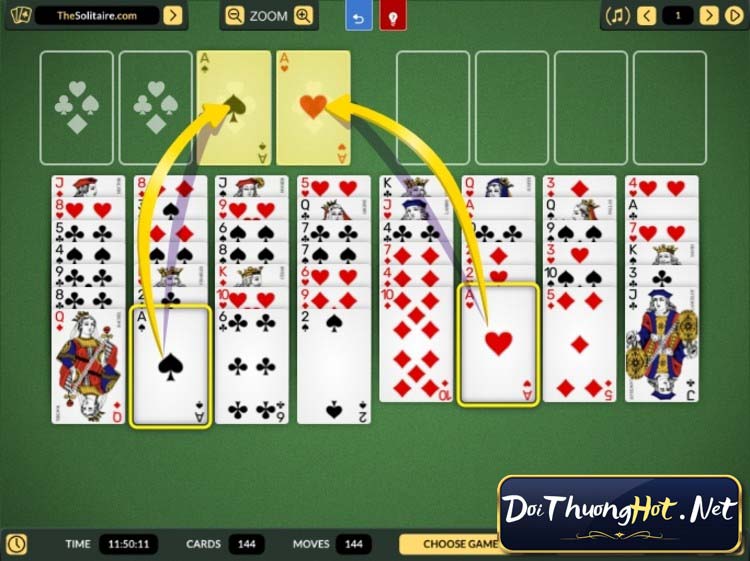
- Unique Setup: Unlike traditional Solitaire, FreeCell Solitaire provides players with four free cells, which act as temporary storage spaces. This feature grants greater freedom and flexibility in maneuvering cards and creating strategic sequences.
- Strategic Planning: Planning is crucial in FreeCell Solitaire. Take time to analyze the layout and think several moves ahead. Consider the consequences of each move, as one wrong decision can greatly impact the progress of the game.
- Empty Columns: Creating empty columns is a vital strategy in FreeCell Solitaire. Empty columns act as a holding area for cards, allowing players to rearrange sequences and unlock blocked cards. Aim to create empty columns early to maximize your options.
- Building Foundations: Focus on building the foundation piles as soon as possible. By moving Aces to the foundation, you create an organizational structure that facilitates the movement of cards and increases the chances of success.
- Utilizing Free Cells: Make the most of the free cells by utilizing them strategically. Use them to temporarily store cards that hinder progress or to create new sequences. Carefully manage the free cells to ensure optimal card placement.
- Sequencing: Pay attention to card sequencing in FreeCell Solitaire. Arrange cards in descending order and alternate colors to create cascades of moves. Sequencing is critical to unlocking blocked cards and creating open spaces.
By understanding and implementing these unique aspects and strategies, players can enhance their gameplay and increase their chances of winning in FreeCell Solitaire. The game’s combination of logic, planning, and decision-making makes it an enticing and intellectually stimulating choice for card game enthusiasts.
D. Pyramid Solitaire
1. Explanation of Pyramid Solitaire rules and gameplay
Pyramid Solitaire is a captivating card game that offers a unique and intriguing gameplay experience. Understanding the rules and gameplay is essential to enjoy this popular solitaire variation. Here’s an explanation of the rules and gameplay of Pyramid Solitaire:
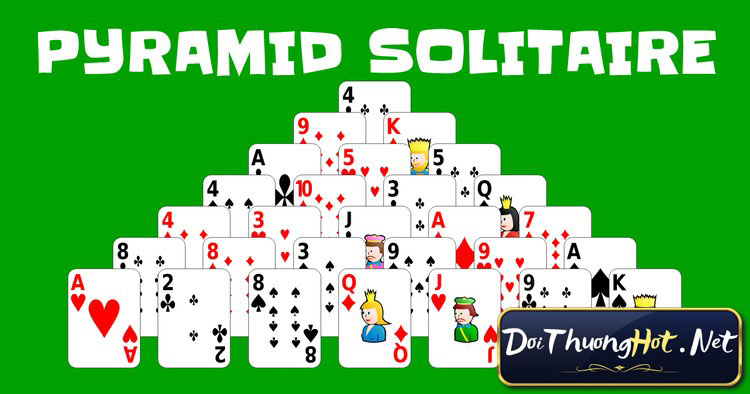
- Objective: The goal is to remove pairs of cards that add up to 13 from the pyramid-shaped tableau.
- Setup: Pyramid Solitaire is typically played with a standard deck of 52 cards. The cards are arranged in a pyramid shape, with one card in the top row, two cards in the second row, and so on, until the final row containing seven cards. The remaining cards are placed in a stock pile.
- Gameplay: Cards can be removed if they are exposed and add up to 13. For example, an Ace can be paired with a Queen, a 2 with a Jack, a 3 with a 10, and so on. Kings are removed individually since they already have a value of 13. If no pairs are available, you can draw cards from the stock pile.
- Winning: The game is won when all cards from the pyramid are successfully removed or paired up.
Pyramid Solitaire requires careful planning and strategic thinking. It is essential to scan the pyramid and identify potential pairs early on to create opportunities for successful moves. The game offers a challenging and rewarding experience as players strive to clear the pyramid by making smart card choices. By mastering the rules and developing effective strategies, players can enhance their enjoyment and success in Pyramid Solitaire.
2. Tips for success in Pyramid Solitaire
Mastering Pyramid Solitaire requires a combination of skill, strategy, and careful decision-making. Whether you’re a beginner or an experienced player, these tips can help increase your chances of success:

- Plan your moves: Before making any moves, survey the pyramid and strategize your approach. Look for potential matches and consider the consequences of each move.
- Focus on uncovering lower cards: Prioritize uncovering lower-ranked cards in the pyramid. This creates more opportunities for matches and frees up higher-ranked cards for later moves.
- Utilize the stock pile wisely: Use the cards from the stock pile strategically. Avoid drawing from it too early, as it may limit your options later in the game. Instead, exhaust other available moves before resorting to the stock pile.
- Reserve high-ranking cards: Retain high-ranking cards like Kings and Aces for crucial moves. These cards have limited pairing options, so it’s best to save them for potential matches that can clear the pyramid or unblock other cards.
- Keep track of exposed cards: Pay attention to the exposed cards in the pyramid. Remember their values and plan your moves accordingly. This knowledge helps identify potential pairs and prevents unnecessary moves that may hinder progress.
- Think ahead: Anticipate the consequences of each move and think several steps ahead. Consider the potential outcomes and plan your moves in a way that maximizes the chances of successfully clearing the pyramid.
By implementing these tips, you can enhance your gameplay in Pyramid Solitaire and increase your likelihood of achieving success. Practice, observation, and strategic thinking are key to mastering this challenging and rewarding solitaire variation.
E. TriPeaks Solitaire
1. Introduction to TriPeaks Solitaire and its mechanics
TriPeaks Solitaire is a captivating and fast-paced variation of the classic Solitaire card game. This game offers a unique twist with its three pyramid-like peaks, giving it its distinct name. Here’s an introduction to TriPeaks Solitaire and an overview of its mechanics:
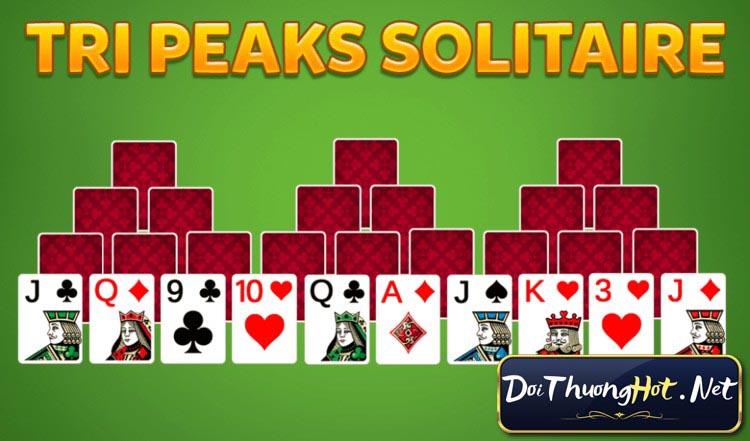
- Objective: The goal of TriPeaks Solitaire is to clear all the cards from the three peaks by selecting cards that are one rank higher or lower than the top card on the waste pile.
- Setup: The game is played with a standard deck of 52 cards. The cards are arranged in three overlapping peaks, with the bottom row fully exposed and the upper rows partially covered.
- Gameplay: To clear cards, players must select a card from the peaks or the waste pile that is one rank higher or lower than the current top card on the waste pile. Aces can be played on Kings and vice versa. The game progresses as players strategically select cards that enable them to uncover more cards from the peaks.
- Winning: The game is won when all cards from the three peaks are successfully cleared. However, the game can end prematurely if no further moves are possible.
TriPeaks Solitaire is an exciting and challenging variation that requires quick decision-making and careful card selection. It combines elements of luck and strategy, making it an engaging choice for solitaire enthusiasts. The game’s mechanics provide a dynamic and interactive experience, ensuring hours of enjoyment for players of all skill levels.
2. Strategies for playing and winning TriPeaks Solitaire
Playing and winning TriPeaks Solitaire requires a combination of strategic thinking, planning, and careful card selection. Whether you’re a beginner or an experienced player, these strategies can help improve your gameplay and increase your chances of winning:

- Prioritize clearing the peaks: Focus on clearing the peaks as your primary objective. Try to uncover and remove cards from the peaks as soon as possible to create space and open up new card options.
- Plan your moves ahead: Take time to plan your moves in advance. Evaluate the available options and consider the consequences of each move. Look for opportunities to create card sequences and uncover cards strategically.
- Uncover hidden cards strategically: When selecting cards from the peaks, choose those that will reveal hidden cards underneath. Uncovering hidden cards provides you with more choices and opportunities for successful moves.
- Utilize wild cards wisely: TriPeaks Solitaire often includes wild cards, which can be played on any card. Use these wild cards strategically to bridge gaps between sequences or to create new opportunities for card removal.
- Keep the waste pile in mind: Be mindful of the cards in the waste pile. Take note of the top card and plan your moves accordingly. Sometimes it’s beneficial to prioritize clearing cards that match the top card in the waste pile.
- Maintain a balanced approach: Try to keep a balance between clearing the peaks and managing the waste pile. Avoid solely focusing on one aspect, as both are crucial for a successful outcome.
By implementing these strategies, you can enhance your gameplay in TriPeaks Solitaire and increase your chances of winning. Remember to stay focused, plan ahead, and make strategic card choices to maximize your success in this exciting solitaire variation.
F. Other notable variations of Solitaire
1. Crescent Solitaire
Crescent Solitaire is a captivating and unique variation of the classic solitaire card game. This game offers a fresh twist with its crescent-shaped tableau, adding a new layer of challenge and strategy. Here’s an introduction to Crescent Solitaire and an overview of its mechanics:
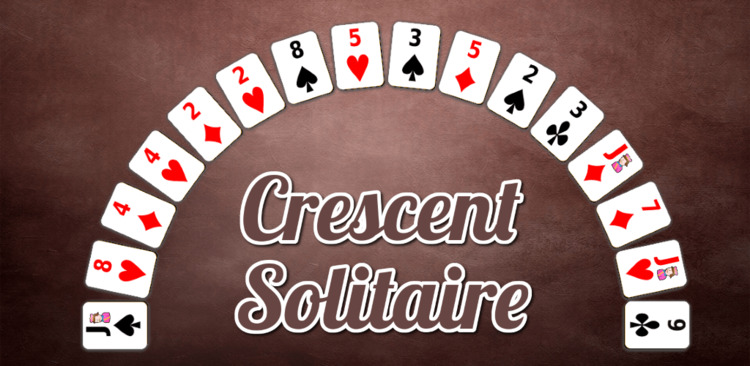
- Objective: The goal of Crescent Solitaire is to move all the cards from the outer crescent to the inner foundation piles, following specific stacking rules.
- Setup: The game is typically played with a standard deck of 52 cards. The cards are arranged in a crescent shape, with a single foundation pile in the center and 16 tableau piles surrounding it.
- Gameplay: To move cards, players must stack them in ascending or descending order, alternating colors. For example, a red Queen can be placed on top of a black King, and a black Jack can be placed on top of a red Queen. Only the outermost cards of the crescent can be moved.
- Winning: The game is won when all cards from the outer crescent are successfully moved to the foundation piles in the center, following the correct stacking order.
Crescent Solitaire provides a fresh and engaging challenge for solitaire enthusiasts. Its unique crescent-shaped tableau adds a strategic element as players must carefully plan their moves and consider the implications of each card placement. The game’s mechanics offer a dynamic and interactive experience, requiring players to make strategic decisions to successfully complete the game.
2. Golf Solitaire
Golf Solitaire is a popular and addictive variation of the classic solitaire card game that offers a unique gameplay experience. This game is known for its simplicity and quick rounds, making it ideal for casual players and those seeking a fast-paced card game. Here’s an introduction to Golf Solitaire and an overview of its mechanics:

- Objective: The goal of Golf Solitaire is to remove all the cards from the playing area by either building up or down on the foundation card.
- Setup: The game is typically played with a standard deck of 52 cards. All the cards are dealt face down in a grid formation, with one card face up on top of the grid to serve as the foundation card.
- Gameplay: Players can remove a card from the grid if it is one rank higher or lower than the foundation card. For example, if the foundation card is a 5, players can remove a 4 or 6 from the grid. Aces can be played on Kings and vice versa. The removed cards are placed on a separate discard pile.
- Winning: The game is won when all the cards from the grid are successfully removed and placed on the discard pile.
Golf Solitaire offers a quick and engaging solitaire experience. Its simple rules and fast gameplay make it accessible to players of all skill levels. The game’s mechanics encourage strategic decision-making as players aim to clear the grid by choosing the optimal cards to remove. With its addictive nature and easy-to-understand rules, Golf Solitaire is a fantastic choice for those seeking a fun and challenging solitaire game.
3. Addiction Solitaire
Addiction Solitaire is an engaging and challenging variation of the classic solitaire card game. It is known for its addictive nature and strategic gameplay. Here’s an introduction to Addiction Solitaire and an overview of its mechanics:
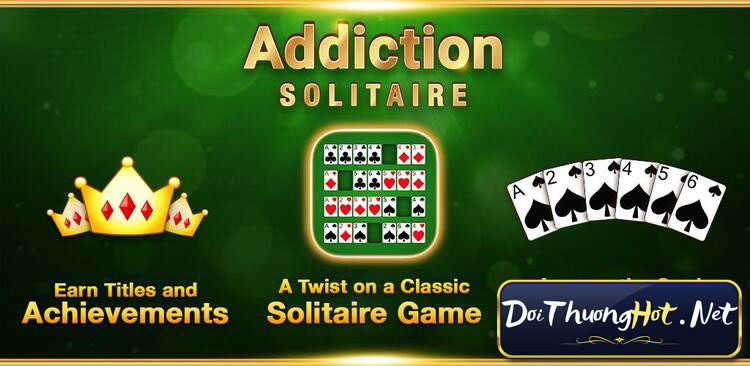
- Objective: The goal of Addiction Solitaire is to arrange all the cards from a shuffled deck into four foundation piles, sorted by suit and in ascending order.
- Setup: The game is played with a standard deck of 52 cards. Initially, four random cards are placed face-up as the foundation piles, and the remaining cards are shuffled and spread out in eight columns.
- Gameplay: To build the foundation piles, players can move cards from the columns to the foundations in ascending order. Only one card can be moved at a time, and gaps in the columns can be filled with any available card.
- Winning: The game is won when all the cards are successfully moved to the foundation piles and arranged in the correct order.
Addiction Solitaire requires strategic thinking and careful planning. Players must analyze the available cards, anticipate future moves, and make calculated decisions to progress towards the goal. The game’s mechanics provide an enjoyable challenge and keep players coming back for more. With its addictive nature and engaging gameplay, Addiction Solitaire is a fantastic choice for solitaire enthusiasts looking for a fresh and captivating twist on the traditional game.
4. Mahjong Solitaire
Mahjong Solitaire is a captivating and addictive tile-matching game that originated from the traditional Chinese game of Mahjong. It offers a unique gameplay experience that combines strategy, concentration, and visual recognition. Here’s an introduction to Mahjong Solitaire and an overview of its mechanics:
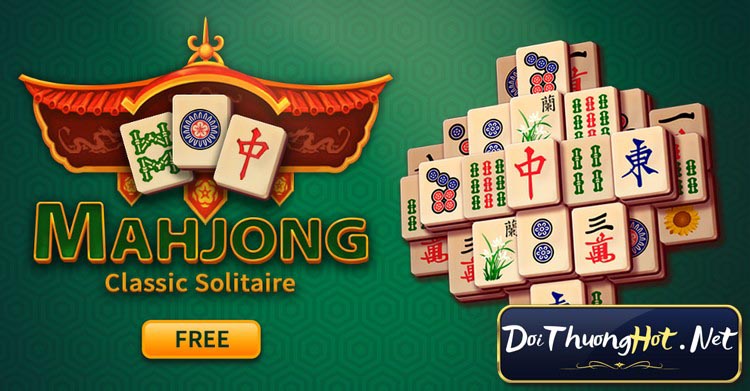
- Objective: The goal of Mahjong Solitaire is to remove all the tiles from the board by matching identical pairs.
- Setup: The game is typically played with a set of Mahjong tiles, which consists of various symbols, characters, and numbers. The tiles are arranged in a layout, forming different patterns or shapes.
- Gameplay: Players can remove tiles from the board if they are free, meaning they are not covered by any other tiles and have at least one side (left or right) unobstructed. Matching pairs of identical tiles are eliminated from the board.
- Winning: The game is won when all the tiles are successfully removed from the board. However, if there are no more available moves or matching pairs, the game may end without completion.
Mahjong Solitaire provides an immersive and challenging experience for players of all ages. Its intricate tile designs, strategic decision-making, and focus on pattern recognition make it a compelling choice for puzzle enthusiasts. The game’s mechanics offer endless possibilities and variations, ensuring that each game is a unique and enjoyable challenge. Whether you’re a beginner or an experienced player, Mahjong Solitaire offers hours of engaging gameplay and is sure to become a favorite pastime.
III. Playing Solitaire Online
A. Online platforms for playing Solitaire
1. Overview of popular online Solitaire platforms
When it comes to playing Solitaire online, there are several popular platforms that offer an array of Solitaire variations, exciting features, and user-friendly interfaces. Here’s an overview of some of the top online Solitaire platforms:

- Solitaire Paradise: Solitaire Paradise is a comprehensive online platform that offers a wide selection of Solitaire games, including Klondike, Spider, FreeCell, and more. It provides a user-friendly interface, customizable game options, and the ability to track your statistics.
- World of Solitaire: World of Solitaire is a highly popular online destination for Solitaire enthusiasts. It offers a vast collection of Solitaire variations, including classic games and unique variants. The platform boasts a sleek design, intuitive controls, and features such as unlimited undo, hints, and statistics tracking.
- 247 Solitaire: 247 Solitaire is a go-to platform for Solitaire players seeking a simple and straightforward experience. It offers a variety of Solitaire games, including Klondike, Spider, and FreeCell, with easy-to-use controls, customizable settings, and smooth gameplay.
- AARP Games: AARP Games provides a dedicated section for Solitaire games, catering to players of all skill levels. It offers a range of Solitaire variations, from classic to modern, along with helpful hints, undo options, and a clean interface.
These online Solitaire platforms provide convenient access to a wide range of Solitaire games, allowing players to enjoy their favorite variations anytime and anywhere. With their user-friendly interfaces, customizable features, and engaging gameplay, these platforms ensure a captivating and enjoyable Solitaire experience for players of all levels.
2. Comparison of features and user experiences
When comparing features and user experiences across different online Solitaire platforms, it’s important to consider various aspects that contribute to the overall gameplay and enjoyment. Here’s a comparison of key features and user experiences:

- Game Selection: Evaluate the variety of Solitaire variations available on each platform. Look for platforms that offer a diverse range of games, including popular variants like Klondike, Spider, FreeCell, and Pyramid Solitaire.
- User Interface: Consider the platform’s user interface and its ease of use. A clean and intuitive interface allows for seamless navigation and enjoyable gameplay. Look for platforms that provide clear graphics, responsive controls, and customizable settings.
- Features: Compare additional features offered by each platform. Features like unlimited undo, hints, and statistics tracking can enhance the user experience and provide helpful tools for players.
- Customization Options: Look for platforms that offer customization options, such as card designs, backgrounds, and sound effects. These options allow players to personalize their gaming environment to suit their preferences.
- Mobile Compatibility: Assess whether the platforms are available on mobile devices. Mobile compatibility enables players to enjoy Solitaire games on the go, providing flexibility and convenience.
- Community and Social Elements: Some platforms offer social features, such as leaderboards, achievements, and multiplayer options, which enhance the community aspect of playing Solitaire online.
By comparing the features and user experiences across different online Solitaire platforms, you can find the one that aligns with your preferences and provides an engaging and enjoyable Solitaire gaming experience. Consider factors such as game selection, user interface, additional features, customization options, mobile compatibility, and community elements to make an informed choice.
B. Benefits and drawbacks of playing Solitaire online
Playing Solitaire online offers a range of benefits and drawbacks that players should consider. Here’s an overview of the advantages and disadvantages of playing Solitaire online:

Benefits:
- Accessibility: Online Solitaire platforms provide easy access to the game from anywhere with an internet connection. Players can enjoy their favorite Solitaire variations at any time, without the need for physical cards or a dedicated playing area.
- Game Variety: Online platforms offer a wide selection of Solitaire variations, providing players with the opportunity to explore different games and challenge themselves with new rules and strategies.
- Convenience: Playing Solitaire online allows for convenience and flexibility. Players can enjoy the game on their preferred devices, including desktops, laptops, tablets, and smartphones, making it accessible on the go.
- Social Interaction: Many online platforms offer social features, such as leaderboards, achievements, and multiplayer options. This enables players to connect with friends, compete against others, and share their achievements.
Drawbacks:
- Lack of Physicality: Online Solitaire lacks the tangible experience of shuffling and dealing physical cards, which some players may find less satisfying.
- Distractions: Playing online can sometimes lead to distractions, such as ads or notifications, which may interrupt the gaming experience and reduce focus.
- Internet Reliance: Online Solitaire requires a stable internet connection, and any disruptions in connectivity can interrupt gameplay.
- Limited Offline Access: Online platforms typically require an internet connection, limiting the ability to play Solitaire offline in situations where internet access is unavailable.
Considering these benefits and drawbacks can help players make an informed decision about whether playing Solitaire online aligns with their preferences and gaming needs.
C. Exploring Solitaire apps and mobile gaming options
Exploring Solitaire apps and mobile gaming options opens up a world of convenience and entertainment for players on the go. Here’s an overview of the advantages and features of Solitaire apps:

- Portability: Solitaire apps are specifically designed for mobile devices, allowing players to enjoy the game anytime, anywhere. The compact nature of mobile devices makes it easy to carry a variety of Solitaire games in your pocket.
- Game Variety: Solitaire apps offer a wide range of game variations, including popular options like Klondike, Spider, FreeCell, and Pyramid Solitaire. Players can choose from different themes, layouts, and difficulty levels to keep the gameplay fresh and exciting.
- Intuitive Controls: Solitaire apps provide user-friendly interfaces and intuitive touch controls, enabling players to easily navigate the game, move cards, and interact with the gameplay elements. This ensures a seamless and enjoyable gaming experience.
- Customization Options: Many Solitaire apps offer customization features, allowing players to personalize the game with various themes, card designs, and backgrounds. This adds a personal touch and enhances the visual appeal of the game.
- Offline Play: One of the significant advantages of Solitaire apps is the ability to play offline. Once downloaded, players can enjoy their favorite Solitaire games even without an internet connection, making it ideal for travel or areas with limited connectivity.
- Social Integration: Some Solitaire apps include social features that allow players to connect with friends, compete on leaderboards, and share achievements, adding a social element to the gameplay.
Exploring Solitaire apps and mobile gaming options provides a convenient and immersive experience, allowing players to indulge in their favorite Solitaire games on the go. With a variety of game choices, intuitive controls, customization options, offline play, and social integration, Solitaire apps offer a delightful and engaging mobile gaming experience for Solitaire enthusiasts.
Multiplayer and social aspects add a new dimension to the experience of playing Solitaire online, fostering interaction, competition, and community engagement. Here’s an overview of the multiplayer and social features of online Solitaire:

- Multiplayer Mode: Many online Solitaire platforms offer multiplayer modes that allow players to compete against each other in real-time. This adds a thrilling element of challenge and encourages friendly competition among players.
- Leaderboards: Leaderboards track the scores and achievements of players, showcasing top performers and creating a sense of competition. Players can compare their progress with others and strive to climb the ranks, adding motivation and a sense of accomplishment.
- Challenges and Tournaments: Some platforms host regular challenges and tournaments where players can participate and showcase their skills. These events often feature specific rules, time limits, or unique gameplay elements, adding excitement and the opportunity to earn rewards.
- Social Integration: Online Solitaire platforms may integrate social features, allowing players to connect with friends or other players. This can include options to invite friends, share achievements, and engage in friendly banter through chat or messaging functions.
- Community Forums and Chat: Online Solitaire platforms may provide community forums or chat rooms where players can interact, discuss strategies, seek advice, and share their love for the game. This fosters a sense of belonging and creates a vibrant community around Solitaire.
The multiplayer and social aspects of online Solitaire elevate the gaming experience, offering players the opportunity to compete, connect, and engage with others who share their passion for the game. These features enhance the sense of camaraderie, provide additional motivation, and create a dynamic and interactive environment for Solitaire enthusiasts.
IV. Solitaire in the Digital Age
A. The impact of technology on Solitaire’s accessibility and reach
The advancements in technology have had a significant impact on the accessibility and reach of Solitaire as a popular card game. Here’s an analysis of the influence of technology on Solitaire:

- Digital Transformation: The transition from physical decks of cards to digital platforms has made Solitaire easily accessible to a wider audience. With the proliferation of smartphones, tablets, and computers, players can now enjoy Solitaire anytime and anywhere, without the need for physical cards or a playing surface.
- Online Platforms: The emergence of online Solitaire platforms has further expanded the reach of the game. Players can choose from a variety of Solitaire variations and engage in multiplayer modes, challenges, and tournaments. Online platforms provide convenience, community interaction, and a seamless gaming experience.
- Mobile Apps: The development of Solitaire mobile apps has revolutionized the way people play the game. With intuitive touch controls, attractive graphics, and customizable features, Solitaire apps have become a popular choice for on-the-go gaming. Players can download apps on their smartphones and tablets, ensuring accessibility and portability.
- Social Connectivity: Technology has facilitated social connectivity within the Solitaire community. Players can share their achievements, compete on leaderboards, and interact with fellow enthusiasts through chat functions or online forums. This sense of connection enhances the overall gaming experience and creates a vibrant community around Solitaire.
The impact of technology on Solitaire has made the game more accessible, convenient, and engaging for players worldwide. The digital transformation, online platforms, mobile apps, and social connectivity have expanded the reach of Solitaire, allowing both seasoned players and newcomers to enjoy the game in various forms and connect with others who share their passion.
B. Solitaire as a casual game and its popularity across different demographics
Solitaire is widely recognized as a popular casual game that appeals to a broad range of demographics. Here’s an analysis of Solitaire as a casual game and its popularity among different groups:

- Universal Appeal: Solitaire’s simple rules and gameplay mechanics make it accessible to players of all ages and skill levels. Its easy-to-understand nature and lack of complex strategies make it an ideal choice for casual gamers seeking a relaxing and enjoyable experience.
- Timeless Entertainment: Solitaire has stood the test of time and continues to captivate players across generations. Its availability on various platforms, including computers, mobile devices, and online platforms, ensures that players can enjoy the game at their convenience.
- Stress Relief: Solitaire serves as a popular choice for stress relief and mental relaxation. Its solitary nature allows players to focus, concentrate, and unwind, making it a go-to option for individuals looking for a calming and meditative gaming experience.
- Demographic Diversity: Solitaire’s appeal spans across different demographics, including older adults, office workers seeking a break, and casual gamers looking for a quick and engaging pastime. Its wide-ranging popularity is a testament to its ability to cater to diverse preferences.
- Accessibility: Solitaire’s availability as a pre-installed game on many devices and its free availability on online platforms contribute to its widespread popularity. The game can be easily accessed without any additional costs or barriers, making it a convenient choice for players.
Solitaire’s status as a casual game and its popularity across different demographics can be attributed to its universal appeal, timeless entertainment value, stress-relieving qualities, demographic diversity, and easy accessibility. These factors have made Solitaire a beloved choice for casual gamers worldwide.
C. The role of Solitaire in the context of online casino games
Solitaire holds a unique position in the realm of online casino games, offering a distinct experience compared to traditional casino offerings. Here’s an analysis of the role of Solitaire in the context of online casinos:

- Skill-Based Gameplay: Unlike many casino games that rely heavily on luck, Solitaire is primarily a skill-based game. Players must strategize, plan their moves, and make decisions that directly impact the outcome. This aspect appeals to individuals who prefer games that require critical thinking and problem-solving abilities.
- Solo Play: Solitaire is a solitary game that allows players to enjoy the thrill of casino-style gameplay without the pressure of competing against others. It provides a relaxing and independent gaming experience, making it an attractive option for those who prefer playing at their own pace.
- Accessibility: Online casinos often feature a wide variety of games, catering to different preferences and skill levels. Including Solitaire in their game offerings allows online casinos to attract a broader audience, including casual players who may not be interested in traditional casino games.
- Diversification: By incorporating Solitaire into their repertoire, online casinos diversify their game selection, providing players with more choices and opportunities for entertainment. This helps casinos stand out in a competitive market and attract players who may be seeking a unique gaming experience.
- Free Play and Practice: Many online casinos offer free versions of Solitaire, allowing players to practice and familiarize themselves with the game without risking real money. This provides a low-pressure environment for players to hone their skills before venturing into other casino games.
Solitaire’s role in the context of online casinos lies in its skill-based gameplay, solo play option, accessibility, diversification, and availability for free play and practice. Its inclusion in online casino offerings adds variety and appeals to a broader range of players, creating a well-rounded gaming experience.
D. Analysis of Solitaire’s presence on search engines and popular gaming platforms
Solitaire maintains a strong presence on search engines and popular gaming platforms, indicating its enduring popularity among players. Here’s an analysis of Solitaire’s presence in these digital spaces:
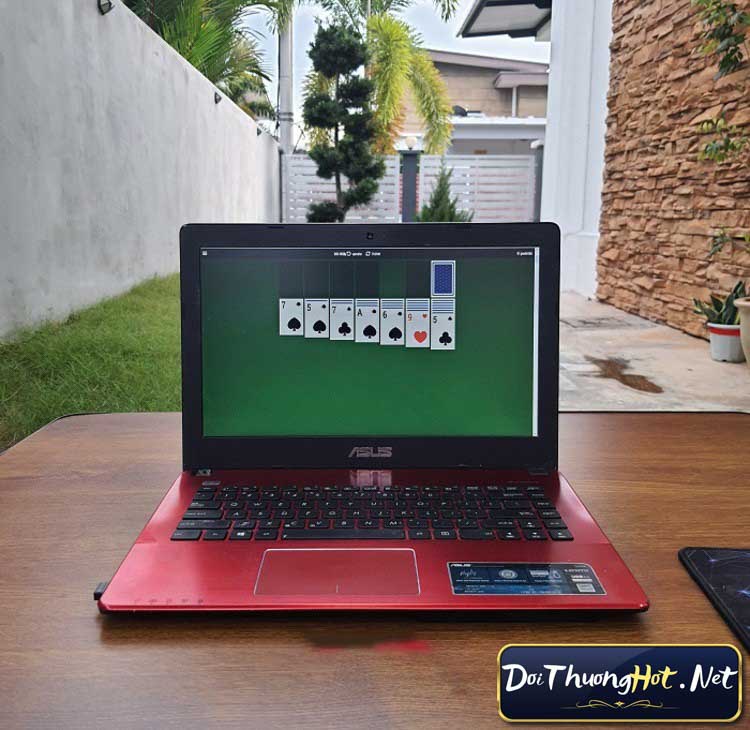
Search Engine Visibility:
- High Search Volume: Solitaire enjoys a significant search volume on search engines, with many players actively seeking information, tutorials, and online versions of the game.
- Keyword Competition: The competitiveness of Solitaire-related keywords indicates the level of interest and demand for the game. It also highlights the abundance of resources available to players, including online platforms, guides, and strategies.
Popular Gaming Platforms:
- Pre-Installed Games: Solitaire often comes pre-installed on computers and mobile devices, ensuring its presence on popular gaming platforms right out of the box. This accessibility contributes to its widespread recognition and usage.
- Online Gaming Portals: Leading gaming platforms offer Solitaire as part of their game library, allowing players to enjoy the game directly from their browsers. These platforms provide various Solitaire variations, multiplayer options, and social features, enhancing the overall gaming experience.
Mobile Apps:
- App Store Rankings: Solitaire consistently ranks among the top games in mobile app stores, showcasing its enduring appeal and popularity. The availability of numerous Solitaire apps, both free and paid, reflects the demand for mobile gaming experiences.
Social Media Presence:
- Engaged Community: Solitaire has an active presence on social media platforms, with dedicated pages and groups where players can discuss strategies, share tips, and engage in Solitaire-related conversations.
Solitaire’s strong presence on search engines, pre-installed games, online gaming platforms, mobile apps, and social media highlights its enduring popularity and widespread recognition among players of all ages. Its visibility in these digital spaces ensures that players have ample opportunities to access and enjoy the game in various formats.
V. Strategies and Tips for Success in Solitaire
A. General tips for playing Solitaire effectively
Mastering Solitaire requires both strategy and skill. Here are some general tips to help you play Solitaire effectively:

- Plan Ahead: Take the time to analyze the layout of the cards at the beginning of the game. Look for potential moves, uncover hidden cards, and identify opportunities for creating empty tableau columns.
- Uncover Hidden Cards: Whenever possible, prioritize uncovering face-down cards. Revealing hidden cards can provide you with more options and flexibility for making moves.
- Build in Suit and Sequence: Place cards in descending order and alternate colors to build foundation piles. This will help you create spaces for more cards and clear tableau columns.
- Prioritize Empty Columns: Aim to create empty tableau columns as early as possible. Empty columns act as storage spaces for temporarily moving cards around and can be useful for reorganizing the layout.
- Avoid Filling Foundations Too Quickly: Don’t rush to move cards to the foundations unless it’s necessary. Keeping cards in the tableau can help you maintain more options for maneuvering and building longer sequences.
- Don’t Always Move Kings: While it may be tempting to move kings to the foundations immediately, consider keeping them in the tableau if they can be used to release trapped cards or create empty columns.
- Undo Moves Strategically: Most Solitaire games allow you to undo moves. Use this feature wisely to experiment with different strategies and maximize your chances of winning.
By following these general tips, you can improve your Solitaire skills and increase your chances of success. Remember, practice and patience are key to becoming a proficient Solitaire player.
B. Specific strategies for different variations of Solitaire
Different variations of Solitaire offer unique challenges and require specific strategies to increase your chances of winning. Here are specific strategies for popular variations of Solitaire:

Klondike Solitaire:
- Build in Suit: Focus on building foundation piles in ascending order by suit. This strategy ensures a smooth flow of cards and creates spaces for new cards.
Spider Solitaire:
- Sequence Building: Prioritize building complete sequences of cards in descending order. Creating empty tableau columns early on can help rearrange and organize the layout.
FreeCell Solitaire:
- Planning Moves: Use the four free cells strategically to your advantage. Move cards in and out of the cells to free up columns and create opportunities for building sequences.
Pyramid Solitaire:
- Uncover Key Cards: Identify and uncover key cards at the base of the pyramid to create potential matches. Focus on eliminating cards that are blocking access to these key cards.
TriPeaks Solitaire:
- Clearing Peaks: Prioritize clearing cards from the peaks to expose new cards. Look for sequences that can be formed with exposed cards and plan your moves accordingly.
Crescent Solitaire:
- Strategic Discards: Be cautious when discarding cards from the crescent piles. Consider the consequences of discarding certain cards and try to maintain a balanced distribution.
These strategies can help you approach different variations of Solitaire with a focused mindset and increase your chances of success. Remember, each variation has its own rules and intricacies, so adapt your strategy accordingly to match the specific game you’re playing.
C. Understanding the odds and probabilities in Solitaire
Understanding the odds and probabilities in Solitaire can enhance your decision-making and overall gameplay. Here’s an analysis of the concept and some key points to consider:

- Card Distribution: The distribution of cards in the initial layout is typically random. This means that the likelihood of specific cards appearing in certain positions is based on chance.
- Limited Knowledge: Unlike games like Poker or Blackjack, where you have information about opponents’ cards, Solitaire is a single-player game. You have limited knowledge about the cards remaining in the deck, making it challenging to calculate precise odds.
- Probability of Winning: The probability of winning a game of Solitaire depends on various factors, such as the game variation, the initial card layout, and the skill level of the player. Some Solitaire variations have higher win rates than others due to their rules and layout.
- Skill vs. Chance: While Solitaire involves skill in terms of planning moves and making strategic decisions, luck still plays a significant role. The odds of winning a particular game can be influenced by the sequence of cards and the choices available to the player.
- Multiple Attempts: Solitaire games often allow multiple attempts, which can increase your overall chances of winning. If you encounter a challenging game, you can try different strategies or restart the game to improve your odds.
Understanding the odds and probabilities in Solitaire can help you make informed decisions, anticipate potential outcomes, and improve your overall gameplay. However, it’s important to note that Solitaire is a game of both skill and chance, and each game presents unique challenges that may affect the probabilities of success.
VI. Solitaire and Mental Stimulation
A. The cognitive benefits of playing Solitaire
Playing Solitaire offers more than just entertainment—it also provides several cognitive benefits that can enhance mental abilities and overall well-being. Here’s an analysis of the concept and its key cognitive benefits:

- Mental Stimulation: Solitaire requires strategic thinking, planning, and problem-solving, which engage and stimulate the brain. Regularly challenging your mind with Solitaire can improve cognitive skills and keep your brain active.
- Concentration and Focus: Solitaire demands focus and concentration to analyze card layouts, make decisions, and execute moves. By practicing concentration during gameplay, you can enhance your ability to sustain attention and improve focus in other areas of life.
- Memory Enhancement: Remembering card positions, tracking moves, and recalling previous strategies in Solitaire exercises your memory capacity. Regularly engaging in memory-intensive activities like Solitaire can help improve memory retention and recall.
- Planning and Organization: Success in Solitaire relies on planning ahead, organizing cards, and making strategic choices. These skills translate into everyday life by fostering better planning abilities and enhancing organizational skills.
- Stress Relief: Engaging in a game of Solitaire can serve as a stress-relieving activity. It provides a mental break, diverting attention from daily worries and promoting relaxation, which can contribute to improved overall mental well-being.
- Problem-Solving Skills: Solitaire presents challenges and obstacles that require problem-solving. By analyzing card combinations and finding optimal solutions, players enhance their ability to think critically and creatively when faced with complex problems.
Playing Solitaire not only offers entertainment but also stimulates cognitive functions, including memory, concentration, problem-solving, and planning skills. By regularly engaging in this card game, individuals can reap the cognitive benefits and enjoy a sharper mind while having fun.
B. Solitaire as a tool for stress relief and relaxation
Solitaire serves as a powerful tool for stress relief and relaxation, offering a calm and immersive experience. Here’s an analysis of the concept and its key benefits:
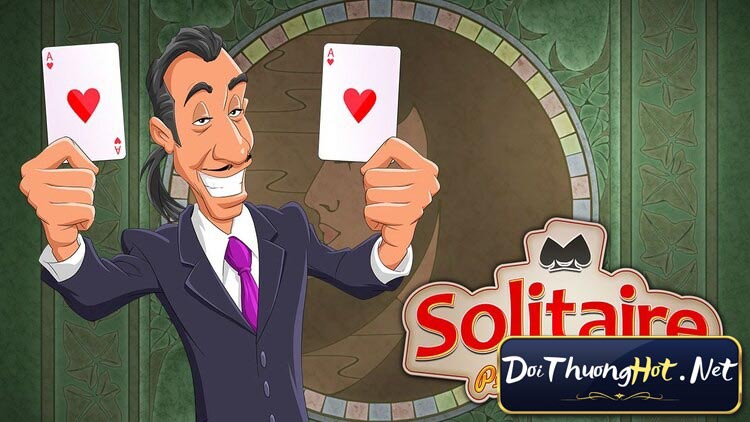
- Tranquil Escape: Playing Solitaire provides a peaceful escape from the demands of daily life. The game’s simple and solitary nature allows individuals to unwind, quiet their minds, and focus on the task at hand.
- Mindful Focus: Solitaire requires concentration and mindful attention to card placement and moves. By directing attention to the game’s mechanics, players can enter a state of flow, letting go of stressors and promoting relaxation.
- Meditative Quality: The repetitive motions of shuffling and arranging cards in Solitaire can have a meditative effect. The rhythmic actions and soothing visual patterns promote a sense of calm and tranquility.
- Stress Reduction: Engaging in Solitaire can help reduce stress levels. As players immerse themselves in the game, their minds shift away from worries and anxieties, leading to a sense of relaxation and mental relief.
- Time for Self-Care: Solitaire provides a dedicated space for self-care and self-reflection. It allows individuals to carve out moments for themselves, fostering a sense of well-being and promoting a balanced lifestyle.
- Emotional Regulation: Solitaire offers an opportunity to regulate emotions by providing a controlled and structured environment. It can help individuals find a sense of control, stability, and accomplishment, leading to reduced stress and enhanced emotional well-being.
Solitaire serves as a valuable tool for stress relief and relaxation, allowing individuals to find respite from daily pressures, promote mindfulness, and achieve a sense of tranquility. By incorporating Solitaire into self-care routines, individuals can experience the therapeutic benefits and achieve a more balanced and stress-free life.
C. Exploring the therapeutic aspects of Solitaire
Exploring the therapeutic aspects of Solitaire reveals its potential as a valuable therapeutic tool. Here’s an analysis of the concept and its key benefits:
- Mental Stimulation: Solitaire engages the mind, stimulating cognitive functions and promoting mental agility. This mental workout can enhance problem-solving skills, memory retention, and overall cognitive abilities.
- Relaxation and Stress Relief: The focused and repetitive nature of Solitaire can induce a state of relaxation, alleviating stress and anxiety. The game provides a soothing and meditative experience, allowing players to unwind and find respite from daily pressures.
- Emotional Regulation: Solitaire offers a structured and controlled environment, allowing individuals to regulate their emotions. By providing a sense of control, accomplishment, and stability, the game can help individuals manage their emotions more effectively.
- Mindfulness and Presence: Playing Solitaire encourages mindfulness, as individuals need to pay attention to each move and card placement. This cultivates a sense of presence, grounding players in the present moment and fostering a state of mindfulness.
- Problem-Solving and Decision-Making Skills: Solitaire requires strategic thinking, planning, and decision-making. Engaging in the game can enhance these skills, promoting critical thinking and analytical reasoning.
- Self-Care and Well-being: Incorporating Solitaire into a self-care routine can contribute to overall well-being. It offers a moment of personal time, allowing individuals to prioritize self-care, relaxation, and mental rejuvenation.
By exploring the therapeutic aspects of Solitaire, individuals can tap into its potential as a therapeutic tool for mental stimulation, relaxation, emotional regulation, mindfulness, and problem-solving. Incorporating Solitaire into daily routines can have a positive impact on overall well-being and promote a healthier and more balanced lifestyle.
VII. The Future of Solitaire
A. Trends and innovations in online Solitaire gaming
Trends and innovations in online Solitaire gaming have transformed the way players engage with this classic card game, enhancing their experience and opening up new possibilities. Here’s an analysis of the concept and its key trends:

- Mobile Accessibility: The rise of mobile devices has made Solitaire accessible anytime, anywhere. Mobile Solitaire apps offer convenience and portability, allowing players to enjoy the game on their smartphones and tablets.
- Multiplayer and Social Integration: Online Solitaire platforms now feature multiplayer modes and social integration, enabling players to compete or collaborate with friends and other players worldwide. This adds a social element to the game, fostering community engagement and friendly competition.
- Enhanced Graphics and Animations: Innovations in graphics and animations have elevated the visual appeal of online Solitaire. From realistic card movements to visually stunning backgrounds, these improvements create a more immersive and visually captivating experience for players.
- Customization Options: Online Solitaire platforms now offer a range of customization options, allowing players to personalize their game settings, card designs, and backgrounds. This customization enhances player engagement and offers a more personalized gaming experience.
- Cross-Platform Compatibility: Many online Solitaire games now offer cross-platform compatibility, enabling seamless gameplay across different devices and operating systems. This allows players to start a game on their computer and continue playing on their mobile device, providing flexibility and convenience.
- Gamification Elements: Some online Solitaire platforms incorporate gamification elements such as achievements, challenges, and rewards, adding an element of progression and motivation for players to keep improving and exploring new aspects of the game.
These trends and innovations in online Solitaire gaming have expanded the possibilities and appeal of the game, making it more accessible, social, visually appealing, and customizable. Players can now enjoy Solitaire in a more immersive and engaging way, keeping up with the evolving demands and preferences of modern gaming.
B. Potential advancements and developments in Solitaire technology
Advancements and developments in Solitaire technology hold exciting potential for the future of this beloved card game. Here’s an analysis of the concept and its potential advancements:

- Virtual Reality (VR) Integration: With the increasing popularity of VR technology, the integration of Solitaire into virtual reality platforms could provide an immersive and lifelike gaming experience. Players would have the opportunity to physically interact with the cards and engage with the game in a more realistic and engaging manner.
- Artificial Intelligence (AI) Opponents: AI-powered opponents could bring a new level of challenge and strategic gameplay to Solitaire. Advanced AI algorithms could analyze player moves, adapt to their strategies, and provide dynamic gameplay experiences, making each game feel unique and challenging.
- Augmented Reality (AR) Enhancements: By incorporating AR technology, Solitaire could be brought to life in the real world. Players could play the game on physical surfaces, such as tables or even walls, with virtual cards and interactive elements appearing seamlessly in their surroundings.
- Online Tournaments and Leaderboards: The future of Solitaire could see the rise of online tournaments and global leaderboards, allowing players to compete against each other for top rankings and prizes. This would foster a competitive community and provide players with new challenges and goals.
- Enhanced Customization and Personalization: Future Solitaire technology could offer even more extensive customization options, allowing players to personalize every aspect of the game, including card designs, backgrounds, and sound effects. This would create a more tailored and immersive gaming experience.
- Integration with Voice Commands and Gesture Controls: Voice commands and gesture controls could revolutionize the way players interact with Solitaire. Players could navigate the game, perform moves, and execute actions simply by speaking or using hand gestures, providing a more intuitive and hands-free gameplay experience.
These potential advancements and developments in Solitaire technology hold the promise of taking the game to new heights. From virtual reality immersion to AI opponents and personalized experiences, the future of Solitaire is filled with exciting possibilities that can enhance gameplay and engage players in innovative ways.
C. Integration of Solitaire into virtual reality and augmented reality platforms
The integration of Solitaire into virtual reality (VR) and augmented reality (AR) platforms opens up new horizons for the immersive and interactive gaming experience. Here’s an analysis of the concept and its key benefits:

- Virtual Reality (VR) Experience: By integrating Solitaire into VR platforms, players can step into a virtual world where they physically interact with the cards and the game environment. This creates a highly realistic and engaging experience, making players feel like they are playing Solitaire in a physical space.
- Immersive Environments: VR technology allows for the creation of immersive environments with stunning visuals and interactive elements. Players can enjoy Solitaire in various virtual settings, such as a serene beach or a tranquil forest, enhancing the overall gaming experience and providing a sense of escapism.
- Augmented Reality (AR) Integration: With AR technology, Solitaire can be overlaid onto the real-world environment. Players can play the game on physical surfaces like tables or even walls, with virtual cards and interactive elements seamlessly integrated into their surroundings.
- Interactive Gameplay: VR and AR integration can introduce new interactive elements to Solitaire. For example, players can physically pick up and move the cards, shuffle them by hand gestures, or zoom in for a closer look. This level of interaction adds a new dimension to the game, making it more engaging and immersive.
- Social and Multiplayer Features: VR and AR platforms can enable multiplayer functionality, allowing players to compete or collaborate with others in virtual or augmented spaces. This social aspect enhances the social experience of playing Solitaire, fostering a sense of community and friendly competition.
The integration of Solitaire into virtual reality and augmented reality platforms revolutionizes the way players experience the game. By immersing players in virtual environments, offering interactive gameplay, and enabling social interactions, VR and AR technology take Solitaire to new levels of engagement, making it an exciting and captivating experience for players of all ages.
Advantages of Solitaire:
| Advantages | Description |
|---|---|
| 1. Easy to Learn | Solitaire has simple rules and can be quickly understood by players of all ages and skill levels. |
| 2. Solo Entertainment | Solitaire is a single-player game, offering a relaxing and enjoyable gaming experience without the need for opponents or complicated setups. |
| 3. Mental Stimulation | Solitaire requires strategic thinking, problem-solving, and decision-making, which can enhance cognitive skills and keep the mind sharp. |
| 4. Portable | Solitaire can be played with a standard deck of cards or on digital platforms, making it easily accessible and playable on the go. |
| 5. Time Filler | Solitaire is an ideal game for passing the time, whether it’s during breaks, while traveling, or when waiting for appointments or events. |
Disadvantages of Solitaire:
| Disadvantages | Description |
|---|---|
| 1. Solitary Experience | Solitaire is a solo game, lacking the social interaction and competitive elements found in multiplayer games. |
| 2. Repetitive Gameplay | The nature of Solitaire can become repetitive over time, as the goal and mechanics remain relatively unchanged across different games. |
| 3. Limited Variety | While there are various Solitaire variations, the overall gameplay concept remains similar, which may not appeal to players seeking diverse experiences. |
Note: The number of advantages and disadvantages can be adjusted based on the specific needs and preferences of the content.
VIII. Conclusion
A. Recap of the significance and appeal of Solitaire
Solitaire holds significant appeal as one of the most beloved and enduring card games. Here’s a recap of its significance and appeal:
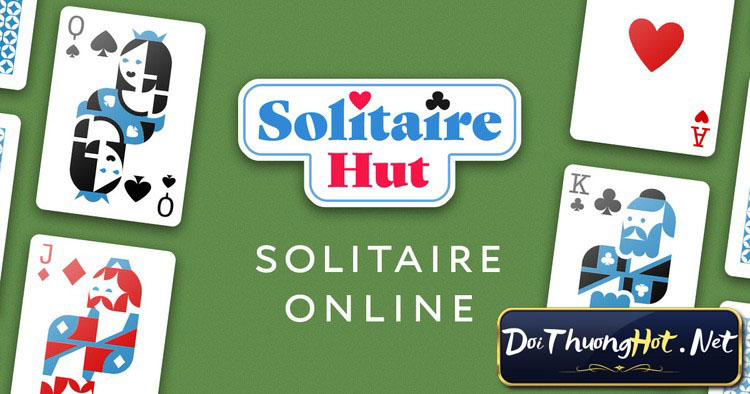
- Timeless Classic: Solitaire has stood the test of time, captivating players for centuries with its simple yet engaging gameplay.
- Accessibility: The game’s rules are easy to learn, making it accessible to players of all ages and skill levels.
- Solo Entertainment: Solitaire offers a solitary gaming experience, providing a sense of relaxation, concentration, and mental stimulation.
- Versatility: With numerous variations, including Klondike, Spider, and FreeCell, Solitaire offers a range of gameplay options to cater to individual preferences.
- Skill Building: Playing Solitaire sharpens problem-solving, critical thinking, and strategic planning skills.
- Portable Entertainment: Solitaire’s digital versions and mobile apps enable on-the-go gameplay, making it a convenient source of entertainment anytime, anywhere.
- Stress Relief: The game’s repetitive nature and focus on gameplay provide a calming and meditative experience, offering stress relief and relaxation.
- Global Popularity: Solitaire’s widespread popularity spans across cultures and demographics, making it a universally recognized and cherished pastime.
Solitaire’s timeless appeal, accessibility, versatility, and beneficial qualities have made it a cherished game enjoyed by millions worldwide.
B. Final thoughts on the enduring popularity of Solitaire
The enduring popularity of Solitaire can be attributed to its timeless appeal and enduring qualities. Here are some final thoughts on why Solitaire continues to captivate players:
- Simplicity: Solitaire’s straightforward rules and gameplay make it easy for anyone to pick up and play.
- Accessibility: The game can be played with a standard deck of cards or through digital platforms, making it accessible to players across various devices.
- Solo Entertainment: Solitaire provides a satisfying solo gaming experience, offering a sense of relaxation, concentration, and personal achievement.
- Classic Appeal: As a game that has been enjoyed for generations, Solitaire holds nostalgic value and a sense of tradition.
- Skill Development: Playing Solitaire enhances critical thinking, problem-solving, and strategic planning skills.
- Universal Recognition: Solitaire is recognized globally, transcending cultural boundaries and appealing to players of all ages.
- Versatility: With a variety of variations and digital adaptations, Solitaire offers something for every player’s preference.
- Time Filler: Solitaire serves as a quick and engaging way to pass the time, making it a go-to choice for moments of leisure or boredom.
The enduring popularity of Solitaire can be attributed to its simplicity, accessibility, solo entertainment value, and ability to adapt to changing technology. As a timeless game loved by millions, Solitaire continues to stand the test of time and remains a beloved pastime for players around the world.
C. Speculation on Solitaire’s future and its continued relevance in gaming culture

Speculating on Solitaire’s future reveals its continued relevance and potential growth within gaming culture. Here are some key points to consider:
- Digital Evolution: As technology advances, Solitaire is likely to embrace new platforms, such as virtual reality, augmented reality, and mobile gaming, enhancing the gaming experience and attracting new audiences.
- Innovation and Adaptation: Game developers may introduce innovative features, such as multiplayer modes, social integration, and customizable gameplay, to keep Solitaire fresh and engaging.
- Cross-platform Accessibility: Solitaire’s popularity across different devices and operating systems ensures its continued relevance, allowing players to enjoy the game on their preferred platforms.
- Integration with Online Communities: Solitaire could further integrate with online gaming communities, providing opportunities for competition, leaderboards, and sharing achievements, fostering a sense of community among players.
- Esports Potential: While not traditionally associated with competitive gaming, Solitaire’s strategic elements could lead to the emergence of Solitaire tournaments or esports events, showcasing high-level play and attracting a competitive gaming audience.
With its timeless appeal and adaptability, Solitaire has the potential to evolve and maintain its relevance within gaming culture. As technology advances and gaming preferences change, Solitaire will continue to captivate players and find new avenues for growth and innovation.
In conclusion, Solitaire proves to be a timeless classic that has stood the test of time. Its simplicity, accessibility, and solo gameplay make it a beloved choice for players seeking relaxation and mental stimulation. Whether played with physical cards or through digital platforms, Solitaire offers a meditative experience that engages the mind and provides a momentary escape from the hectic pace of everyday life.
While it may lack the social interaction found in multiplayer games, its strategic nature and diverse variations ensure that each game remains unique. Solitaire continues to captivate players of all ages, cementing its status as a staple in the world of card games.















